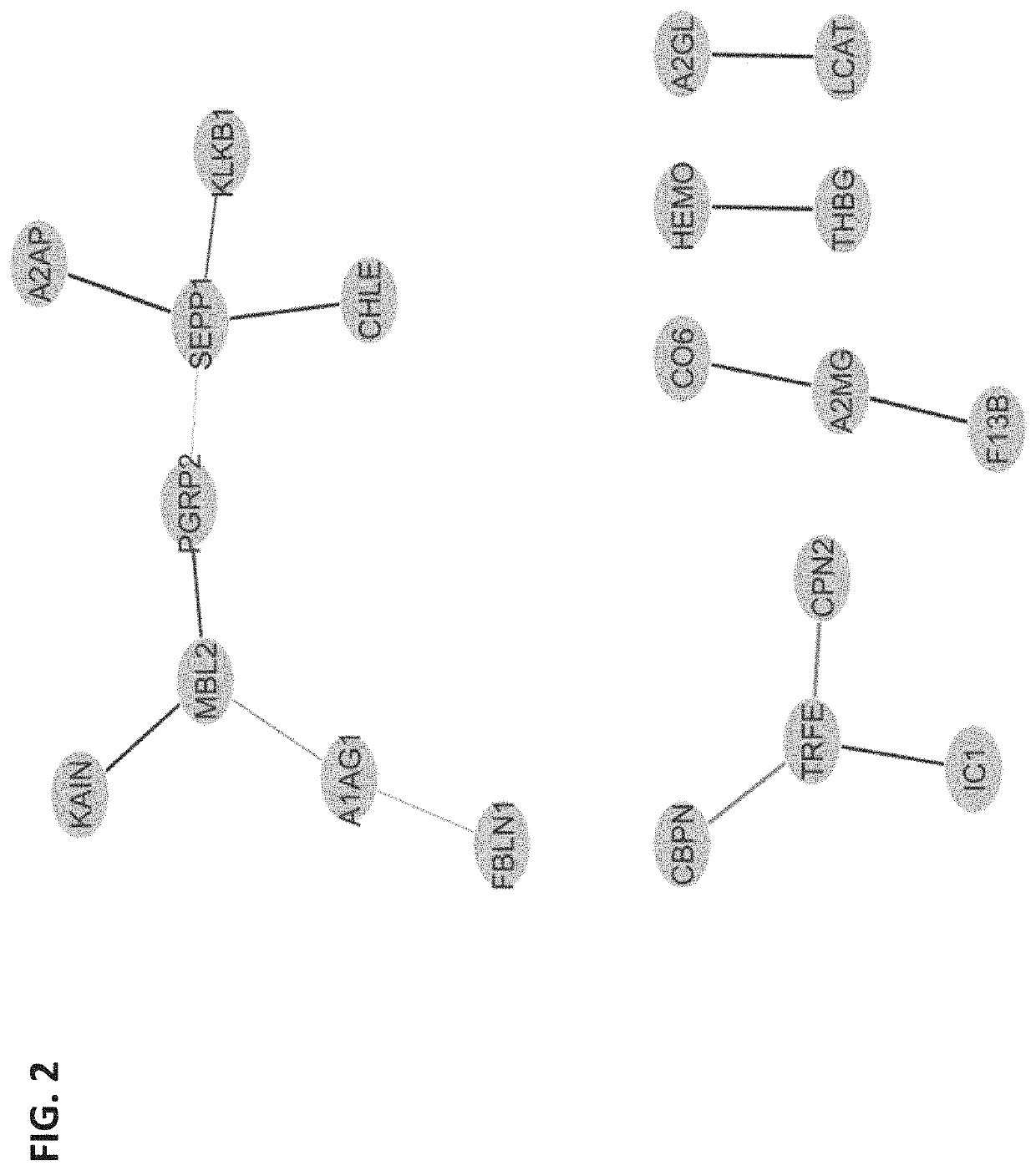Systems and methods of using machine learning analysis to stratify risk of spontaneous preterm birth
a machine learning and risk analysis technology, applied in computing models, instruments, drug compositions, etc., can solve the problems of little recent advancement understanding of the etiology of spontaneous preterm birth (sptb), ethically and physically difficult to study the pathophysiology of the utero-placental interface, etc., and achieve the effect of decreasing the risk of premature delivery for pregnant subjects
- Summary
- Abstract
- Description
- Claims
- Application Information
AI Technical Summary
Benefits of technology
Problems solved by technology
Method used
Image
Examples
example 1
dentification of SPTB Biomarkers in Samples Obtained Between 10-12 Weeks Gestation
[0136]This example describes a study utilizing plasma samples obtained between 10-12 weeks gestation as part of a prospectively collected birth cohort. Singleton cases of SPTB prior to 34 weeks were matched by maternal age, race and gestastional age of sampling to uncomplicated term deliveries after 37 weeks. Circulating microparticles (CMPs) from first trimester samples were isolated and subsequently analyzed by multiple reaction monitoring mass spectrometery (MRM-MS) to identify protein biomarkers. SPTB <34 weeks was assessed given the increased neonatal morbidity in that gestational age range.
Materials and Methods
[0137]Clinical Data and Specimen Collection. Clinical data and maternal K2-EDTA plasma samples (10-12 weeks gestation) were obtained and stored at −80° C. at Brigham and Women's Hospital (BWH), Boston, Mass. between 2009-2014 as part of the prospectively collected LIFECODES birth cohort (Mc...
example 2
ation of SPTB Biomarkers in Samples Obtained Between 22-24 Weeks Gestation
[0155]This example describes a study utilizing plasma samples obtained between 22-24 weeks gestation, from the same pregnant subjects of Example 1. The sample preparation, analysis and statistical methods were the same as that described for Example 1.
[0156]As examples, measurements of three biomarkers (ITIH4, AACT, and F13A) analayzed in Example 1 (time point D1) were plotted against the proteins' corresponding measurements at the later time point of this example (time point D2). This is depicted in FIG. 5—there are different yet clear patterns between D1 and D2 measurements for individual biomarkers that can be used to improve separation between SPTBs and controls. Dash lines indicate possible classification boundaries between SPTB and controls using two time point measurements.
[0157]The following proteins displayed consistent performance as predictive for SPTB at week 10-12 (time point D1, Example 1) and wee...
example 3
ation of a Subset of SPTB Biomarkers in Samples Obtained Between 10-12 Weeks Gestation
[0158]This example describes a study utilizing plasma samples obtained between 10-12 weeks gestation. Using an independent cohort from that of Example 1, a set of markers was validated that, when obtained between 10-12 weeks, predict SPTB <35 weeks.
Methods:
[0159]Obstetrical outcomes in 75 singleton pregnancies with prospectively collected plasma samples obtained between 10-12 weeks were validated by physician reviewers for SPTB <35 weeks. These were matched to 150 uncomplicated singleton term deliveries. Controls were matched on gestational age at sampling (+ / −2 weeks), maternal age (+ / −2 years), race and parity. CMPs from these specimens were isolated and analyzed by multiple reaction monitoring mass spectrometry for known protein biomarkers selected from the previous study for their ability to predict the risk of delivery <35 weeks. The biological relevance of these analytes via a combined functi...
PUM
 Login to View More
Login to View More Abstract
Description
Claims
Application Information
 Login to View More
Login to View More - R&D
- Intellectual Property
- Life Sciences
- Materials
- Tech Scout
- Unparalleled Data Quality
- Higher Quality Content
- 60% Fewer Hallucinations
Browse by: Latest US Patents, China's latest patents, Technical Efficacy Thesaurus, Application Domain, Technology Topic, Popular Technical Reports.
© 2025 PatSnap. All rights reserved.Legal|Privacy policy|Modern Slavery Act Transparency Statement|Sitemap|About US| Contact US: help@patsnap.com



